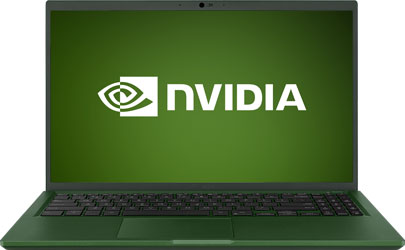Report an Error
NVIDIA Quadro RTX 5000 Mobile
- Graphics Processor
- TU104
- Cores
- 3072
- TMUs
- 192
- ROPs
- 64
- Memory Size
- 16 GB
- Memory Type
- GDDR6
- Bus Width
- 256 bit
Recommended Gaming Resolutions:
- 1920x1080
- 2560x1440
- 3840x2160
The Quadro RTX 5000 Mobile is a professional mobile graphics chip by NVIDIA, launched on May 27th, 2019. Built on the 12 nm process, and based on the TU104 graphics processor, in its N19E-Q5-A1 variant, the chip supports DirectX 12 Ultimate. The TU104 graphics processor is a large chip with a die area of 545 mm² and 13,600 million transistors. It features 3072 shading units, 192 texture mapping units, and 64 ROPs. Also included are 384 tensor cores which help improve the speed of machine learning applications. The card also has 48 raytracing acceleration cores. NVIDIA has paired 16 GB GDDR6 memory with the Quadro RTX 5000 Mobile, which are connected using a 256-bit memory interface. The GPU is operating at a frequency of 1035 MHz, which can be boosted up to 1530 MHz, memory is running at 1750 MHz (14 Gbps effective).
Its power draw is rated at 110 W maximum. This device has no display connectivity, as it is not designed to have monitors connected to it. Rather it is intended for use in laptop/notebooks and will use the output of the host mobile device. Quadro RTX 5000 Mobile is connected to the rest of the system using a PCI-Express 3.0 x16 interface.
Its power draw is rated at 110 W maximum. This device has no display connectivity, as it is not designed to have monitors connected to it. Rather it is intended for use in laptop/notebooks and will use the output of the host mobile device. Quadro RTX 5000 Mobile is connected to the rest of the system using a PCI-Express 3.0 x16 interface.
Graphics Processor
Mobile Graphics
- Release Date
- May 27th, 2019
- Generation
-
Quadro Turing-M
(Tx000)
- Predecessor
- Quadro Pascal-M
- Successor
- Quadro Ampere-M
- Production
- Active
- Bus Interface
- PCIe 3.0 x16
Relative Performance
Based on TPU review data: "Performance Summary" at 1920x1080, 4K for 2080 Ti and faster.
Performance estimated based on architecture, shader count and clocks.
Clock Speeds
- Base Clock
- 1035 MHz
- Boost Clock
- 1530 MHz
- Memory Clock
-
1750 MHz
14 Gbps effective
Memory
- Memory Size
- 16 GB
- Memory Type
- GDDR6
- Memory Bus
- 256 bit
- Bandwidth
- 448.0 GB/s
Render Config
- Shading Units
- 3072
- TMUs
- 192
- ROPs
- 64
- SM Count
- 48
- Tensor Cores
- 384
- RT Cores
- 48
- L1 Cache
- 64 KB (per SM)
- L2 Cache
- 4 MB
Theoretical Performance
- Pixel Rate
- 97.92 GPixel/s
- Texture Rate
- 293.8 GTexel/s
- FP16 (half)
- 18.80 TFLOPS (2:1)
- FP32 (float)
- 9.400 TFLOPS
- FP64 (double)
- 293.8 GFLOPS (1:32)
Board Design
- Slot Width
- IGP
- TDP
- 110 W
- Outputs
- Portable Device Dependent
- Power Connectors
- None
Graphics Features
- DirectX
- 12 Ultimate (12_2)
- OpenGL
- 4.6
- OpenCL
- 3.0
- Vulkan
- 1.3
- CUDA
- 7.5
- Shader Model
- 6.8
TU104 GPU Notes
| Ray Tracing Cores: 1st Gen Tensor Cores: 2nd Gen NVENC: 7th Gen NVDEC: 4th Gen PureVideo HD: VP10 VDPAU: Feature Set J Latest Drivers: Windows 7 / 8 / 8.1 (x64): GeForce Release 474.89 Quadro Release R440 U3 (441.28) Data Center Release 426.32 Windows 10 / 11 (x64): GeForce Release: Latest Quadro Release: Latest Data Center Release: Latest |
Devices based on this design (3)
| Name | GPU Clock | Boost Clock | Memory Clock | Other Changes |
|---|---|---|---|---|
| 1035 MHz | 1530 MHz | 1750 MHz | ||
| 1354 MHz | 1569 MHz | 1750 MHz | ||
| 1365 MHz | 1770 MHz | 1750 MHz | 4x DisplayPort, 150 W |
Nov 5th, 2024 18:24 EST
change timezone
Latest GPU Drivers
New Forum Posts
- Are the 2 mentioned monitors a good upgrade over my current one? (6)
- 2022-X58/1366 PIN Motherboards NVME M.2 SSD BIOS MOD Collection (760)
- What are you playing? (22122)
- 5950x/5900x on a low end trash mb-black friday sale (6)
- E-cores still evolve. But is there a reason for it? (112)
- Laptop battery degrading or charger issue (9)
- Ryzen 7950X on air..? (38)
- Dragon Age: The Veilguard performance analysis (40)
- New RTX 5090 + 9800X3D build: ASUS TUF GAMING X670E-PLUS WIFI a good choice? (59)
- Post your Anvil's Storage score for SSD (37)
Popular Reviews
- Dragon Age: The Veilguard Performance Benchmark Review
- SilverStone SETA A2 Review
- DDR5 Memory Performance Scaling with AMD Zen 5
- Call of Duty: Black Ops 6 Performance Benchmark Review - AMD FTW
- Intel Core Ultra 9 285K Review
- Ocypus Iota C70 BK ARGB Review
- G-Wolves Hati-R 8K Review
- Enermax PlatiGemini 1200 W Review
- Intel Core Ultra 7 265K Review
- I\OAudio SOGNO In-Ear Monitors Review - 2 DD, 6 BA, All Harman
Controversial News Posts
- AMD Falling Behind: Radeon dGPUs Absent from Steam's Top 20 (170)
- Quick Denuvo DRM Cracks Cost Game Publishers 20% in Revenue, According to Study (136)
- AMD Introduces Next-Generation AMD Ryzen 7 9800X3D Processor, $479, Nov 7 (124)
- MSI OCLab Reveals Ryzen 9000X3D 11-13% Faster Than 7000X3D, AMD Set to Dominate "Arrow Lake" in Gaming (123)
- Apple and Samsung in the Fray to Acquire Intel: Rumor (121)
- AMD Ryzen 7 9800X3D Comes with 120W TDP, 5.20 GHz Boost, All Specs Leaked (120)
- Intel's Core Ultra 9 285K Performance Claims Leaked, Doesn't Beat i9-14900K at Gaming (114)
- NVIDIA Tunes GeForce RTX 5080 GDDR7 Memory to 32 Gbps, RTX 5070 Launches at CES (112)




